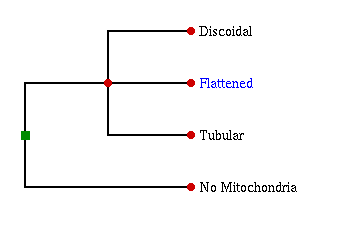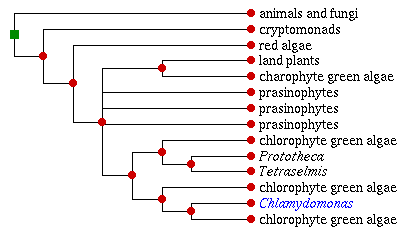Chlamydomonas is a large genus of green flagellates. More than 600 species have been described worldwide from marine and freshwaters, soil, and even snow. Chlamydomonas, until ca. 1970, was considered by many to be the most ancient of the green plants. Presently, though, Chlamydomonas species are considered non-ancestral members of the "chlorophyte" lineage ("Chlorophyceae") of green algae. Several Chlamydomonas species have become important experimental organisms in fields such as cell and molecular biology, genetics, plant physiology, and biotechnology.

Postulated global eukaryote phylogeny based on presence or (ancestral) absence of mitochondria, and shape of mitochondrial cristae. Chlamydomonas belongs to the flattened clade.

Postulated phylogenetic position of Chlamydomonas, inferred from molecular and morphological data. Branch lengths are arbitrary and do not reflect phylogenetic distance.
Return to summary information